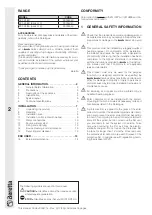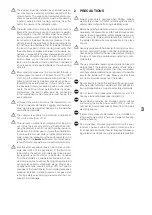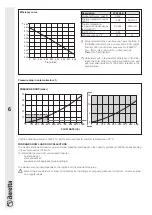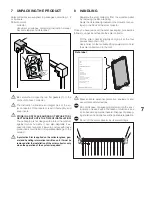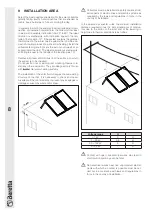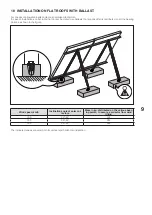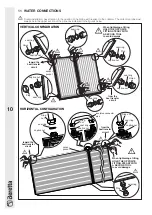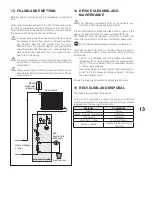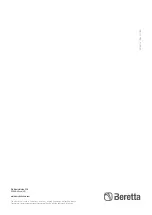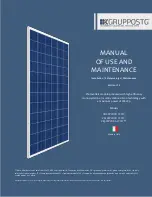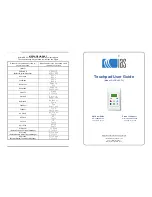
INSTALLATION
8
9 INSTALLATION AREA
Select the best possible orientation for the solar collectors
(ideally facing south). Avoid positions that are shaded by
plants, trees, buildings or hills, etc. during the day.
In systems in which the summer load is predominant (pro-
duction of domestic hot water) aim the collector from east
to west with a variable inclination from 20° to 60°. The ideal
direction is southwards, with inclination equal to the lati-
tude of the location -10°. If the system sustains the greatest
thermal load in the winter (as in systems that combine do-
mestic hot water production with central heating), install the
collectors facing south (or south-east or south-west) at an
angle greater than 35°. The ideal orientation is southwards,
at an angle equal to the latitude of the location plus 10°.
Remove all gravel and detritus from the surface on which
the system is to be installed.
Do not use flat roof or sloping roof mounting frames to in-
stall any other equipment. They are designed only for use
with
B
solar water heating systems.
The installation of the solar field changes the pre-existing
structure of the roof. It is necessary to check and possi-
bly adapt all the roof elements to prevent any seepages or
damages caused by wind and/or snow.
>1,5 m
>1,5 m
b
Collectors must be installed at a safety distance from
active parts of electric lines and electric systems as
required by the laws and regulations in force in the
country of installation.
In the absence of specific rules, the minimum installation
distance required minus the side movements of conduc-
tors due to the action of the wind and of the lowering in
height due to thermal conditions is as follows:
H
Voltage range
H
< 1 kV
3
m
1 ÷ 30 kV
3,5
m
30 ÷ 132 kV
5
m
< 132 kV
7
m
b
Contact with open, live electrical wires may lead to
electrocution and may even be fatal.
b
Non-electrical works near live unprotected electric
ducts with which a contact is possible must be car-
ried out in accordance with laws and regulations in
force in the country of installation.


